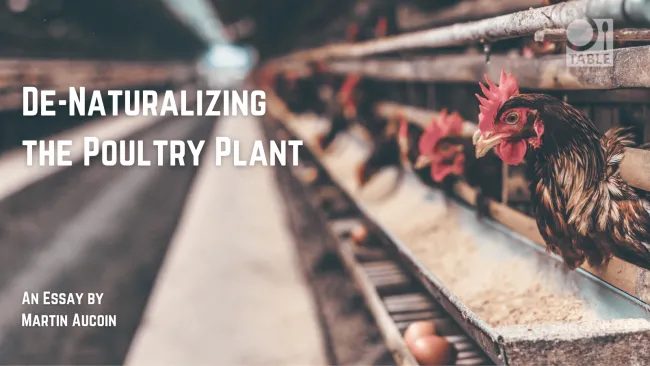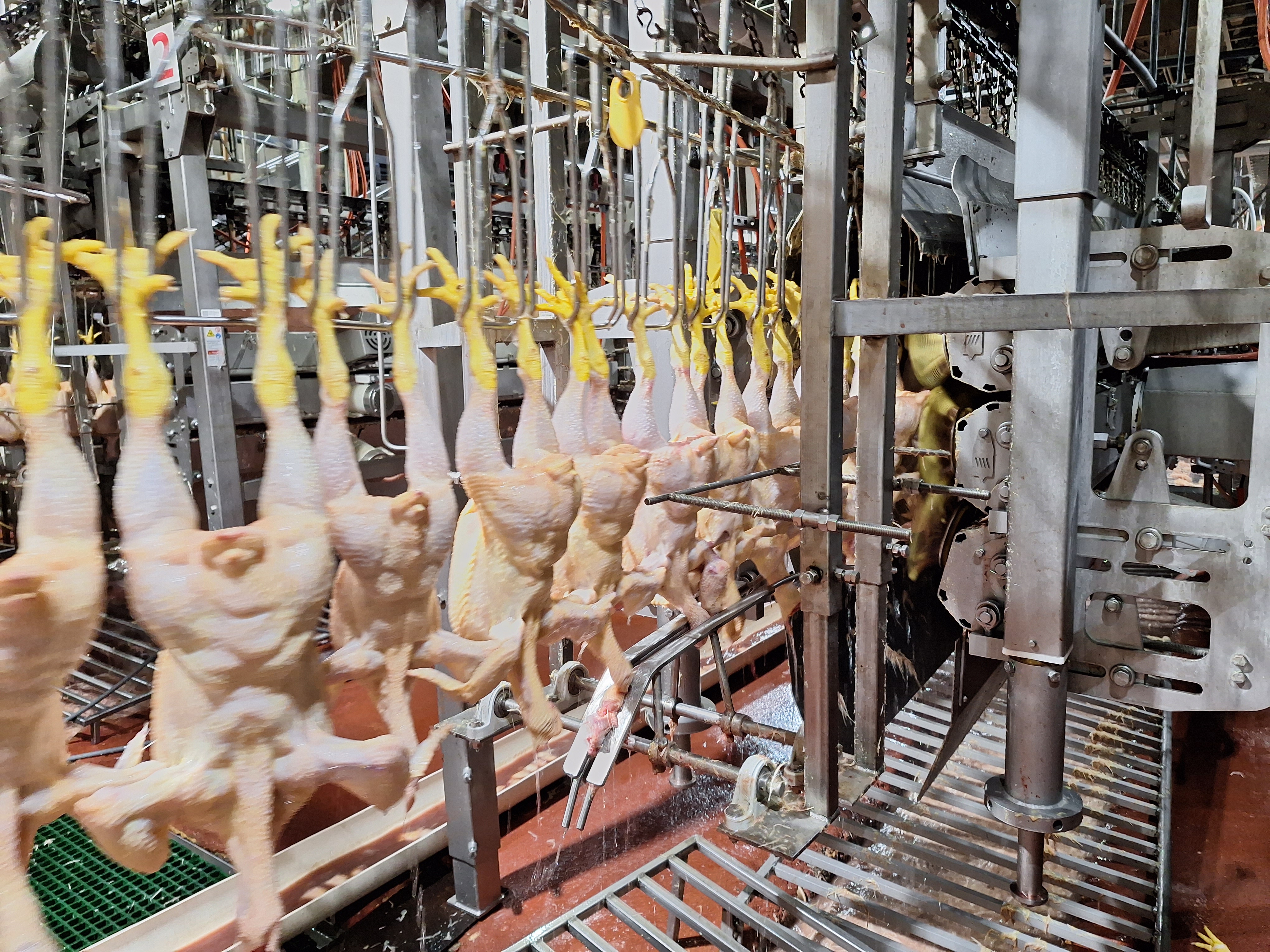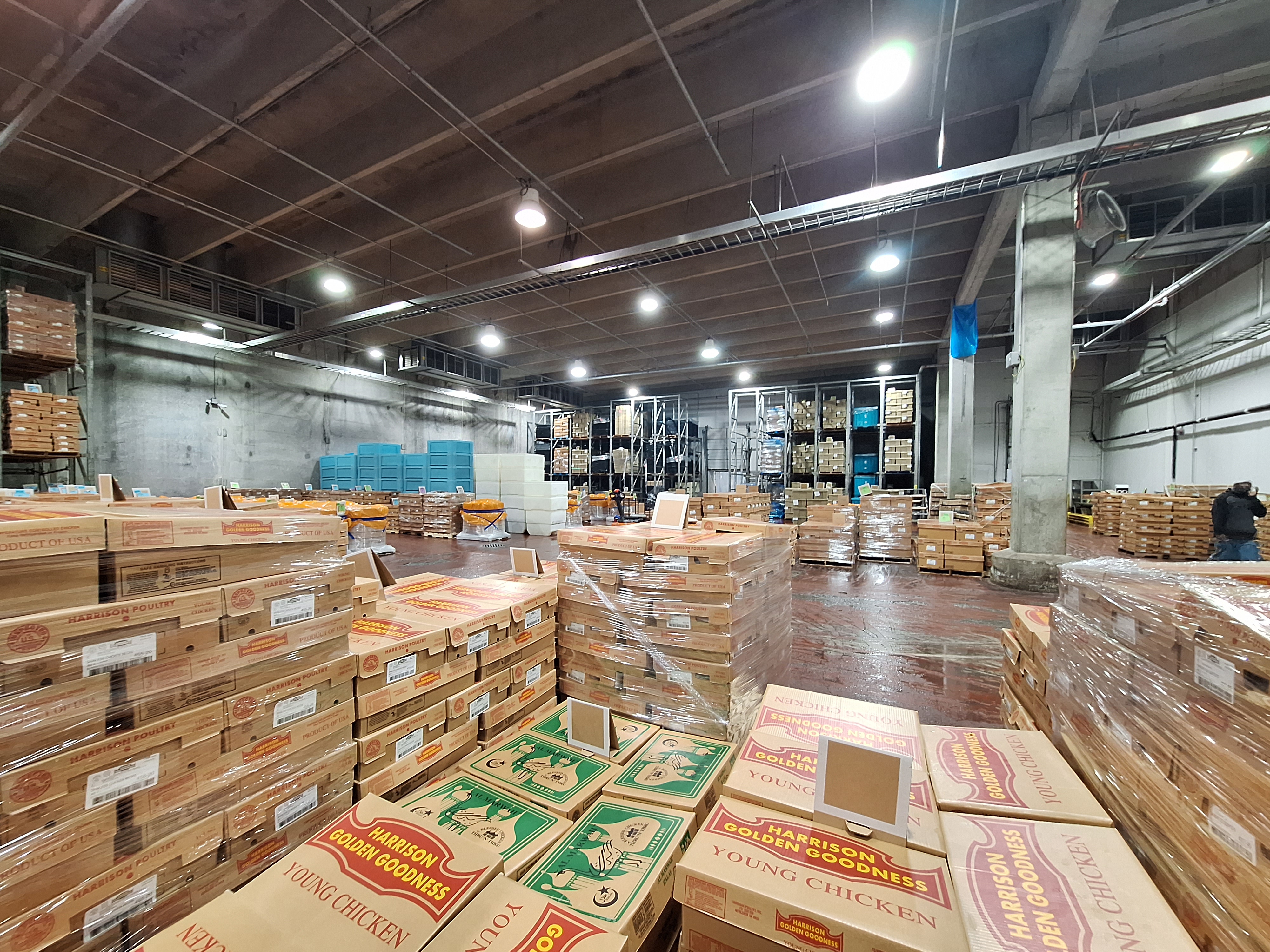Footnotes
1. See page 8 of Cronon, W. 1996. “The Trouble With Wilderness: Or, Getting Back to the Wrong Nature.” Environmental History 1(1): 7-28.
Martin Aucoin's De-Naturalizing the Poultry Plant is the winning essay from TABLE's 2024 Essay Challenge. The Challenge asked participants to consider the question, 'Should food systems be more natural?'
Martin's essay reflects both on our understanding of the word 'natural' and on the deeply embedded but often invisible structures our food systems rely upon. Distilling questions from his own experience and research, he proposes the poultry plant as a natural consequence of a modern way to eat and feed.
Martin Aucoin grew up in the rural Brazos Valley of Texas, never far away from people growing food: "Being surrounded by massive corn and soy fields, pecan orchards, and cattle and poultry operations, impressed upon me the vast scale at which modern agriculture operates. This made me feel disconnected from the food I ate – too small to even count. I felt this even more distinctly when I moved to the Dallas area for my undergraduate studies. The disjuncture between producer and consumer drove me to get involved in Dallas/Fort Worth local food movements and inspires my work to this day. Since then, I’ve worked as an environmental educator in Massachusetts, a Peace Corps Volunteer in The Gambia, and am currently finishing my graduate studies. My current life in Boston leaves little time or space for growing food other than a small garden, but I try to take as much pleasure as possible in cooking food and serving it to people. I dream of greater connectivity with the food I eat, the people who grow it, and the other species whose lives nourish humanity. I think many people share this dream, even if subconsciously; my work and writing explore this disjuncture and seek innovative pathways towards putting people back into relationship with their food."

The smell of a poultry plant is something I will never forget. It is an acrid odor, an amalgamation of rendered fat, blood, wet feathers, feces, and chlorine. As I write, the smell fills my head, reminding me of the first time I drove onto a poultry processing plant campus in my hometown of Bryan, Texas. I was driving Uber at the time, dropping a worker off for an eight-hour shift on the kill floor. “Good Lord,” I exclaimed, rolling the window up, “I couldn’t handle breathing that in every day, it’s unnatural.” The worker just chuckled and said, begrudgingly, “you get used to it, that’s the smell of putting food on the table.”
They were right, of course. I had neither killed a chicken at the time nor set foot in a slaughterhouse. Over the last year, however, the unnatural smell has become familiar. While conducting dissertation research on the growth of export-focused broiler chicken production in the Southeastern U.S., I came to associate the scent with productivity, industry, and a narrative that American poultry producers are “feeding the world.” It's that famous promise to place a chicken in every pot, fulfilled on the global scale. This global protein provisioning is the natural expression of the logic of specialization. With growing populations comes a growing need for food, a need for protein. And Southeastern U.S. poultry farmers are very good at producing chicken.
Many of the farmers, producers, and executives I spoke with during my research reiterated this bare fact: feeding the world takes massive amounts of food, and chickens are among the most efficient ways to turn grain into protein. Interviewing poultry scientists and economists impressed upon me the modern broiler chicken’s machine-like abilities to transform corn and soybeans into food for the world. The quantities necessary to do so are hard to grasp until you see a machine the size of a small building turn 172,000 live birds into meat every day. I began to regard the poultry plant as a strange organism that digests live animals, repackaging them for convenient human consumption. Machine and animal blur together, the neat categories collapsing as grain becomes chicken becomes meat becomes human.
A poultry slaughterhouse is, I argue, a natural feature of the modern global landscape. This is because the term “natural” is inherently rooted in contradiction. For many Americans, a natural feature of the landscape would call to mind a pure mountain stream, a pristine forest untouched by humans, or an organic farm replete with green pastures and happy animals. These images and the feelings associated with them are familiar to consumers: we see them every day on social media, on cartons of milk, or on shiny packages of skinless, boneless chicken breast. Yet these are polite fictions that obscure a disjuncture at the heart of humanity’s relationship to the environment and to other species.

Chicken disassembly line, photo by Martin Aucoin
William Cronon wrote that “wilderness hides its unnaturalness behind a mask that is all the more beguiling because it seems so natural.” Demonstrating how even the most pristine features of the American landscape like natural parks rest on a dangerous nature/culture dualism, he argued that the only way to address mounting environmental justice concerns was to abolish the divide and recognize the full natural and cultural continuum of our planet1. A poultry plant is an inversion of the wilderness myth: a place so industrial and distasteful that it must be hidden; a process so unnatural to urban consumers that it must be confined to rural hinterlands. Few consumers ever see a plant, or drive through the metropolises of poultry houses that radiate out from them. Our knowledge of this food chain is confined to plastic packages of supermarket chicken. The poultry plant, obscured, becomes the natural way of putting food on humanity’s table.
And here we are, all 8 billion of us and counting. We are hungry. Our stomachs must be fed, and our needs must be satisfied. In natural ecosystems, organisms specialize to fill a niche – a particular need of that ecosystem. Our ecosystem now encompasses the entire globe and includes that mystical system of production, consumption and exchange known as the economy. What is a poultry plant if not a massive, specialized organism operating as a key node in a network of other organisms that house and feed broiler chickens before distributing them to humans? When the central contradiction that human is not animal and society is not nature collapses, we are left with a bare truth: the vertically integrated poultry food chain is a natural development in response to humanity’s desire to eat chicken.

Boxed chicken for export, photo by Martin Aucoin
Vertical integration in food systems naturalizes and obscures all sorts of practices that would make most consumers’ stomachs turn if they knew of them. These massive supply chains specialize in compartmentalization, keeping contract-farmers isolated from plant workers and consumers. One economist informed me that this model “decouples the producer from the consumer”, a process that ensures both low prices at the supermarket and that product packaging is the only information about our food to which most of us have access. This is compounded in export markets, where even less information exists about where food comes from and how it was made.
Because nature, as a concept, is rooted in the disjuncture between human and environment, our modern food systems are similarly based on a disconnect between consumer and producer. This is the danger in advocating for more natural food systems. The concept is prone to misrepresentation and ripe for a variety of quick fixes such as greenwashing, rebranding, and the contracting-out of sustainability measures.
Of course, many of the issues I’ve raised with the concept of “natural food” are simply products of global thinking. When the production and distribution of chicken on a global scale is controlled by a handful of multinational conglomerates, and when these
companies perpetuate a narrative of global hunger and scarcity that must be fed as efficiently as possible, the answer will always be that vertically integrated global supply chains are natural and necessary. The answer is simple, however: to recouple the consumer to the producer. When consumers understand where their food comes from and how it’s made, many of these contradictions collapse. This is easier said than done. The local and slow food movements, intended to address these concerns, have proved effective only for a privileged few. Yet knowledge about food systems should be accessible to all, especially those living in import-dependent countries. Building better food systems means that we must be more involved, more contextual, more specific.
There is no one-size-fits-all solution to these problems. Allow me to offer a specific example, however, of what I mean by recoupling consumers to food and farmers. Part of my research on transnational poultry food chains involved surveying households in The Gambia that consume American poultry products. Most of those I spoke with indicated they had little to no idea of where their chicken came from and had many concerns about its safety and quality. At the end of each survey, I asked respondents if they had any questions for me. Many wanted to know basic information about where their chicken was from, who raised it, how it was killed, and what kinds of chemicals had been used in its production. After I described the elaborate transnational supply chain linking them to contract producers in Georgia, one respondent remarked that “now I understand why the chicken tastes like nothing and smells like a freezer.” Another noted that “chickens can be raised anywhere and eat anything, there is no reason we could not grow our own here.”
Our lengthy food chains that span continents specialize in decoupling producers from consumers, removing any contextual information about the food we eat. That acrid smell I noted at the poultry plant had been lost along the many miles and months between slaughter and consumption. Yet most of us desire more out of our chicken than just protein. We want to know if it is good for us, if it is good for the people that grow and process it, and if its method of production is sustainable in the long-term. We desire a greater relationship with the food we eat than just paying for it at the market.
Billboard advertisement in The Gambia, photo by Martin Aucoin
Making food systems more “natural” invites easy solutions and more polite supermarket fictions. Making food systems transparent, legible, and knowable invites consumers to see, hear, taste, and smell their food at each step of its production and processing. When consumers possess knowledge about their food, they can then decide if it is in line with their values. In this sense, building better food systems begins with the consumer and extends backwards through the twisted, tangled webs that are modern supply chains. The task, now, is to find innovative and equitable ways to arm consumers with knowledge about food systems. This is an inherently anti-global undertaking: it must be specific and contextual. Otherwise, our current methods of producing food will continue to be passed off as natural, and consumers will remain in the dark about what exactly they are eating.
Comments (0)